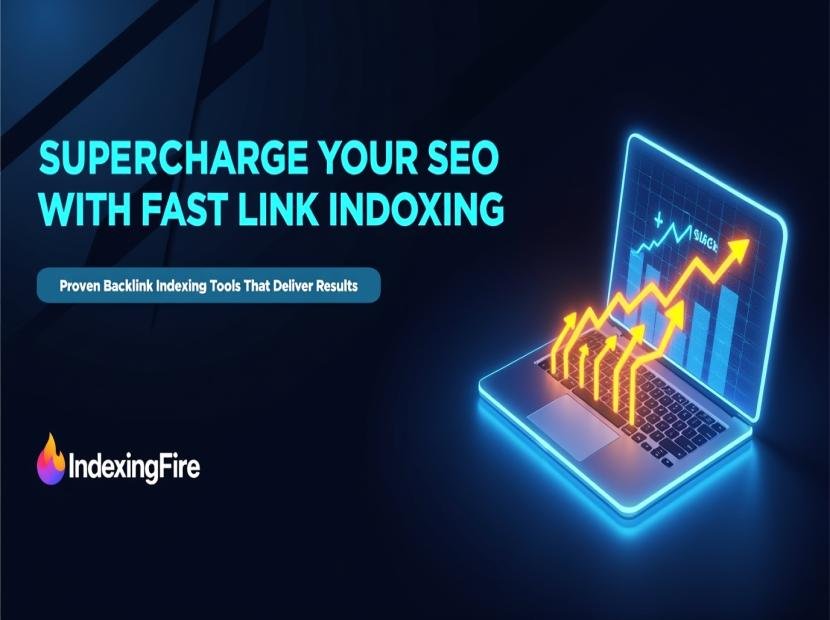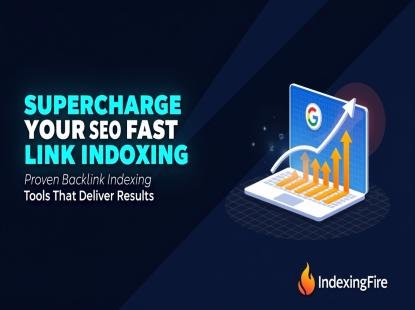
Unleash Your SEO Potential with a Backlink Indexing Service That Delivers Results Fast
Introduction
Imagine spending hours or even days building high-quality backlinks—guest posts, web 2.0 properties, forum signatures—only to wait weeks for Google to notice them. You know that backlinks are one of the most powerful ranking signals, but if they aren’t indexed, they’re essentially invisible. That’s where a dedicated backlink indexing service comes into play. By leveraging a reliable link indexing service, like a top-rated backlink indexing tool, you can ensure every link you earn is actually counted by search engines. In this post, we’ll explore how to choose the best backlink indexer, why instant link indexer solutions outperform traditional methods, and how to integrate a website indexing tool that transforms your SEO strategy.
1. What Is a Backlink Indexing Service and Why You Need One
A backlink indexing service is a specialized platform designed to push newly created links into search engine databases more quickly. When you build a backlink—whether it’s a guest post, blog comment, or social bookmark—Google’s crawlers don’t always discover it on their own right away. Without indexing, your backlinks won’t pass authority, and your ranking efforts stall.
-
Accelerated Discovery: Instead of waiting for Google’s crawlers to find your link naturally, a link indexing service submits your URLs directly to multiple sources (APIs, RSS feeds, social signals) so search engines register them faster.
-
Better ROI on Link Building: Every link costs time or money. If a link isn’t indexed, it’s effectively wasted. A fast indexing tool ensures each backlink you earn becomes an active ranking signal.
-
Competitive Advantage: While competitors wait days or weeks, your site can start climbing the SERPs within hours. That means more traffic and faster ROI.
2. How Link Indexing Service Works Behind the Scenes
Even if you’re not a developer, it helps to understand how a link indexing solution operates:
-
Submission to Indexing Sources
-
A backlink indexing tool typically sends your submitted URLs to high-authority indexing endpoints, RSS aggregators, and social platforms that search engines frequently crawl.
-
Some services integrate with the official Google Indexing API when eligible, which pushes links into Google’s queue almost immediately.
-
-
IP Rotation and User Agent Cycling
-
Reputable providers avoid pinging the same endpoint from a single IP or user agent too often. By rotating IP addresses and user agents, they mimic natural user behavior, reducing the chance of being flagged or throttled.
-
-
Automated Resubmissions
-
If a link remains unindexed after a set period (often 24 hours), the system automatically resubmits it to alternate sources, increasing the chance of discovery.
-
-
Status Tracking and Reporting
-
A good backlink indexing service logs the status of each submitted URL—pending, indexed, or failed. This lets you see exactly how many of your backlinks index successfully and where to focus additional outreach.
-
3. Choosing the Best Backlink Indexing Tool for Your Website
Not all providers are created equal. When evaluating a backlink indexing tool, consider these criteria:
-
Indexing Success Rate
Look for services that routinely achieve at least an 70–90% indexing rate, even for “hard-to-index” links like press releases or web directories. -
Speed of Indexing
Some tools index links in 24–72 hours or more. If you need urgent results, prioritize the fastest backlink indexer available. -
Safety and Compliance
Avoid providers that rely on spammy tactics—mass bookmarking sites, scraped link lists, or disallowed scripts. A truly white-hat link indexer follows Google Webmaster Guidelines to minimize penalty risk. -
API Access
If you plan to scale or integrate indexing into your own dashboard, choose a platform with a well-documented RESTful API. This lets you automate large batches of URL submissions. -
Reporting and Analytics
The best backlink indexing tools offer a dashboard that shows which URLs are indexed, which are pending, and detailed error codes for any failures. Look for exportable CSV or PDF reports. -
Pricing and Volume Discounts
Most services use a pay-as-you-go credit system. Compare per-URL costs and volume discount thresholds. Some offer tiered pricing (e.g., $0.10 per URL up to 1,000; $0.08 over 5,000).
4. Key Benefits of Using the Best Backlink Indexer for SEO
Investing in a top-rated best backlink indexer unlocks several advantages:
-
Faster Ranking Signals
When your backlinks are indexed immediately, search engines can factor them into ranking algorithms without delay. You see keyword rank improvements sooner. -
Guaranteed Link Equity
Indexed backlinks pass “link juice” to your website. A backlink indexer ensures that every valid link you earn contributes to your authority and relevance signals. -
Enhanced Crawl Frequency
If Google sees activity on a newly created backlink, it’s more likely to revisit that page and related pages, keeping your overall site fresh in the index. -
Time Savings for SEO Teams
Instead of manually pinging multiple indexing endpoints or waiting on uncertain results, a centralized service handles all submission tasks automatically. -
Credibility With Clients and Stakeholders
Detailed reports from a backlinks indexer show which links have been indexed, making it easy to demonstrate ROI to clients or internal teams.
5. Instant Link Indexer vs. Traditional Methods: What’s the Difference?
Before dedicated indexing tools existed, SEOs relied on manual methods:
-
Manual Ping Services
Copy-pasting each new URL into ping tools or social sharing platforms one at a time. -
RSS Aggregators
Submitting blog feeds to RSS directories and hoping Google crawls those feeds often. -
Social Bookmarks
Posting links to sites like Reddit, StumbleUpon, or Digg to attract crawler attention.
While these tactics can work occasionally, they’re labor-intensive and unreliable. An instant link indexer automates every step:
-
Bulk Submission
Submit hundreds or thousands of URLs in a single batch. -
Automated Retrying
The system resubmits failed links without manual intervention. -
Real-Time Monitoring
Track indexing status in a unified dashboard rather than guessing if you successfully pinged the right source. -
Faster Turnaround
Most modern backlink indexers deliver results in 2–4 hours compared to 24+ hours or indefinite waiting with manual methods.
6. How to Integrate a Website Indexing Tool into Your Workflow
To make link indexing a seamless part of your SEO process, follow these steps:
-
Select Your Platform
Sign up for a reputable link indexing service that meets your needs (speed, cost, safety). -
Gather Your Backlink List
Whether you’re performing a client campaign or updating your own website, compile all new URLs into a spreadsheet or text file (one URL per line). -
Access the Dashboard or API
-
For a user interface: Log in to the “Index Links” section, paste your list, and click “Submit.”
-
For API integration: Use provided code samples (PHP, Python, Node.js) to push your URLs programmatically.
-
-
Set Up Automated Alerts
Enable email or webhook notifications so you’re informed the moment a link transitions from “pending” to “indexed.” Some platforms let you configure thresholds—for example, alerting only if the indexing rate falls below 75%. -
Export and Archive Reports
Once indexing is complete, download CSV or PDF reports. Keep these on file for client audits or historical analysis of your link-building success rate. -
Optimize Based on Results
If certain URL patterns (e.g., low-quality directories or private blog networks) consistently fail to index, refine your link strategy toward higher-authority placements.
7. Top Features to Look for in a Fast Indexing Tool
When searching for the fastest indexing tool, evaluate these must-have features:
-
High Throughput
Ability to process large batches—thousands of URLs per day without timeout errors. -
Priority Indexing Option
Some services offer a “priority lane” for an extra fee, ensuring time-sensitive links get indexed first. -
API Rate Limits and Quotas
Check daily or hourly submission limits. The best Google indexer platforms allow at least 5,000–10,000 URLs per day via API. -
Detailed Error Codes
If a URL fails, you need actionable information: “404 Not Found,” “Blocked by robots.txt,” or “Duplicate content detected.” This allows quick fixes. -
Multi-Source Submission Channels
Look for a provider that uses a combination of Google’s Indexing API, RSS pinging, social signals (e.g., Twitter, Facebook), and high-authority webmaster tools. The more channels, the higher the chance of indexing. -
Credit Refund Policy
A reassuring feature: if a link never indexes after multiple attempts (usually 48 hours), you get your credit back automatically. This guarantees you never overpay for failed submissions.
8. Common Mistakes to Avoid When You Index Backlinks
Even with a premium backlink indexer, it’s possible to undermine your efforts. Avoid these pitfalls:
-
Submitting Broken or Redirected URLs
If a URL returns a 404 or redirects to another page, it won’t index. Always verify your backlinks before submission. -
Overusing the Same IP or User Agent
Cheap or fraudulent services may rely on a single IP, which gets flagged. Choose a provider with proper IP rotation to avoid being throttled or blocked. -
Ignoring Robots.txt and Noindex Tags
If the target page prohibits crawling via robots.txt or has a noindex meta tag, no indexing tool can override that. Make sure the page is crawlable and indexable. -
Counting on Nofollow Links to Index
Nofollow links can pass crawling signals occasionally, but they don’t carry full link equity. Focus on dofollow placements when possible, though nofollow links can still send important signals like referral traffic. -
Neglecting Report Analysis
Simply submitting thousands of URLs and walking away is a mistake. Review indexing reports to identify which links are indexing well and which sources underperform, then adjust your outreach strategy accordingly.
9. How to Measure Success: Tracking Indexed Backlinks Over Time
A successful link indexing service journey goes beyond checking “Indexed” status at the 24-hour mark. Track these metrics to evaluate long-term SEO impact:
-
Indexing Rate Percentage
Calculate the ratio of indexed URLs to total submitted. If you submit 100 links and 85 appear in Google Search Console after 48 hours, your indexing rate is 85%. -
Ranking Improvements
Monitor keyword rankings for pages that received new backlinks. Faster indexing should correlate with quicker rank boosts. Use tools like Google Search Console or third-party rank trackers. -
Organic Traffic Increases
Compare organic traffic to pages before and after backlink indexing. A well-indexed backlink profile often leads to higher domain authority, which can lift entire site performance. -
Referring Page Authority
Keep a record of the domain authority and trust flow of referring pages. High-authority backlinks that index quickly are more valuable than dozens of low-quality links that never index. -
Cost per Indexed Link
Track how much you spend per indexed URL. If a backlink indexing tool charges $0.10 per URL but only indexes 70%, your effective cost per indexed link is about $0.14. Aim for a provider with at least an 85–90% success rate to keep costs down.
10. Getting Started: Steps to Launch Your Link Indexing Service Journey
You’re ready to integrate a backlink indexing tool and turbocharge your SEO. Follow these actionable steps:
-
Select Your Provider
Research and choose a trusted backlink indexing service that offers a high indexing rate, robust API, and transparent reporting. -
Sign Up and Claim Any Free Credits
Many top platforms provide 5–10 free indexing credits for new users. Use these to test performance before committing budget. -
Prepare Your Backlink List
Compile all new URLs into a plain-text file (one URL per line). Verify each URL returns a 200 OK status and has no noindex tags. -
Submit Small Test Batch
Start with 10–20 URLs to gauge index speed and success rate. Review the report after 24 hours to verify indexing. -
Analyze Results and Adjust Strategy
If certain URL types (e.g., forum posts vs. guest articles) index at different rates, refine your outreach focus accordingly. -
Scale Up with Larger Batches
Purchase more credits and submit 500–1,000 URLs at a time. Use priority indexing for time-sensitive campaigns, like product launches or seasonal content. -
Integrate Automation via API
If you manage multiple clients or run frequent link-building campaigns, connect the indexing tool’s API to your own dashboard or CRM. Automate regular submissions and reporting to minimize manual work. -
Monitor and Iterate
Continuously track indexing rates, ranking changes, and organic traffic. Adjust your link-building tactics and indexing schedules based on data—double down on sources that index well and drop those that don’t.
Conclusion
A high-performing SEO strategy hinges on two factors: quality backlinks and ensuring those backlinks get indexed. Without indexing, even the best link-building efforts go unnoticed. By partnering with a reliable backlink indexing service, you can guarantee your links are recognized by Google in hours, not weeks. Whether you choose an industry-leading backlink indexing tool or the best link indexer tailored to your needs, the result is the same: faster ranking signals, better ROI, and an edge over competitors.
Now is the time to take action. Select a fast indexing tool, gather your new backlinks, and start submitting. Monitor your indexing rate, track your rank improvements, and watch organic traffic climb. If you’ve found this guide helpful, share it with your fellow SEOs and leave a comment below with any questions or experiences you’ve had with backlink indexing. Here’s to supercharging your SEO with a top-tier link indexing service!



